Estimated reading time: 8 minutes
Have you ever noticed that your dog’s paws are a combination of pink and black? This is not unusual, as many dogs naturally have dual-colored paws. Our article will help you understand the possible reasons behind the presence of these colors on your pet’s paw pads.
Stick around to learn about this fascinating aspect of our furry friends!
Key Takeaways
- Dogs can have pink and black paws due to natural coloration, genetics, or growth phases.
- Pink and black paws can also indicate infections, allergies, burns, abrasive injuries, or dryness.
- Regularly inspecting your dog’s paws and providing proper care like walking on cooler surfaces, trimming excess fur, keeping paws clean, and using protective measures such as dog shoes or paw wax can help keep their paws healthy.
Possible Reasons Why Your Dog’s Paws are Pink and Black
There are several reasons why your dog’s paws may be pink and black, including natural coloration, infections or allergies, abrasive injuries, burns, and dryness.
Natural Coloration
Some dogs have pink paws because of their genes. Just like hair color, the shade of a dog’s paw pad links to its DNA. Dalmatians and other dog breeds may show this at birth. These pink parts can turn into black spots over time as the pup grows up.
But, in some cases, the paws remain naturally pink even when they become adults. So, if your pet has always had dual-colored paws, it might be because that’s how nature made them!
Growth and Maturity
As your puppy grows, the paws change too. They start with a soft pink color in their early days. But, they grow into a rough outer layer after 6-7 months to help them walk well on tough lands.
Old skin then peels off, causing some parts of the dog’s paws to look pink and black. These changes are normal as the pup matures and should not cause any worry for the dog owner. Just like humans, dogs also go through growth phases that bring about these color shifts in their paws.
Infections, Allergies, and Diseases
Dogs can get sick just like us. They could catch an infection or have allergies that make their paws pink and black. One sign your dog may be sick is if they start to lick their paws a lot. This means something hurts them, itches, or isn’t right.
Food allergies can cause this problem too. These allergies will inflame the skin on your pup’s paw pad and turn them red or pink due to itchiness. The same goes for environmental allergens like grass, dust mites, mold spores, and more.
Your vet can help find out what is wrong with your dog’s paws. He might find bacterial infections caused by licking the skin raw from itching too much.
Yeast, fungus or parasites can also hurt your puppy’s paws.
Another condition is called Pododermatitis where the tops of the feet swell up and itch all the time.
Pink areas on paw pads often point to inflammation which could result from any number of diseases.
So keep checking on those adorable furry feet! And if you see anything strange – call a vet right away!
Abrasive Injuries
Walking on rough surfaces like rocks and dirt can cause abrasive injuries to your dog’s paw pads. When the surface is too rough, it can scrape and damage the sensitive skin on their paws.
This can lead to pink or black discoloration as well as pain for your furry friend. To avoid this, make sure to walk your dog in areas with smoother surfaces and regularly inspect their paws for any signs of injury.
Keeping their nails trimmed can also help prevent these types of injuries.
Burns
Burns can also be a reason why your dog’s paws turn pink. When your dog steps on something hot like pavement, it can cause burns on their paw pads. These burns can make the pink areas swell and blister, similar to what happens to human skin when it gets burned.
Walking on hot surfaces like asphalt can lead to these thermal burns on your dog’s paws. It’s important to protect your pet from walking on excessively hot pavement to prevent painful burns and discomfort for them.
Dryness
Dryness of the paw pads can be a common issue for dogs. When their paws become too dry, it can lead to cracking and discomfort. This is especially true in hot or cold weather conditions, when the paws are exposed to extreme temperatures.
Dryness can also occur due to excessive licking or walking on rough surfaces. To keep your dog’s paw pads healthy, regular moisturizing is important. Applying a paw balm or moisturizer specifically made for dogs can help keep the paws supple and free from cracks.
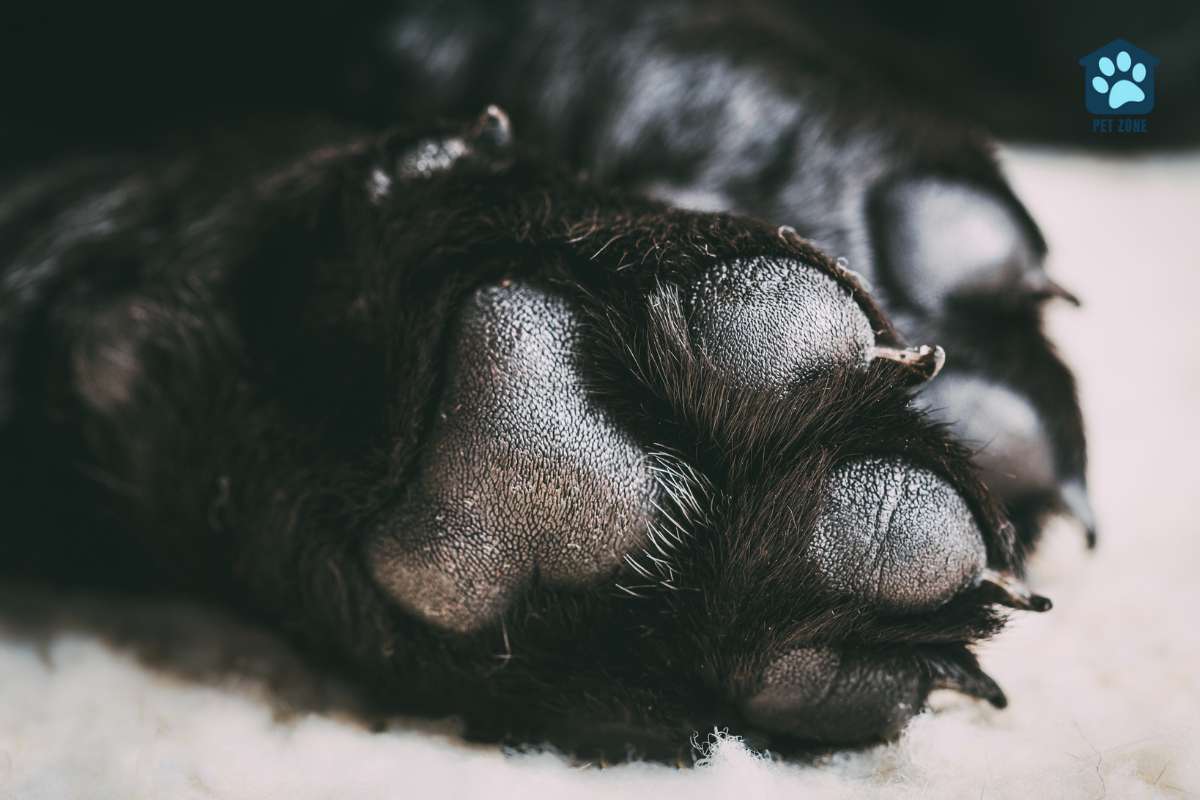
How to Care for Pink and Black Dog Paw Pads
To care for pink and black dog paws, regularly inspect them for any signs of irritation or injury.
Regular inspection
Regularly inspecting your dog’s paws is important for their overall health and well-being. By checking their paws regularly, you can catch any potential issues early on and take appropriate action. Here are some things you should do during a regular paw inspection:
- Look for any redness, swelling, or signs of irritation on the paw pads.
- Check for any cuts, scrapes, or abrasions on the paw pads or in between the toes.
- Examine the nails for any cracks, splits, or overgrowth.
- Make sure there are no foreign objects stuck in between the toes or embedded in the paw pad.
- Pay attention to any changes in color or texture of the paw pads.
Walking on cooler surfaces
Walking on cooler surfaces is important for the care of your dog’s pink and black paws. When dogs walk on hot pavement or other hot surfaces, they can get burns and blisters on their paws.
However, by walking your dog on cooler surfaces like grass or shaded areas, you can protect their paws from these painful injuries. Cooler surfaces help to prevent overheating and provide relief for sensitive paw pads.
So, when taking your furry friend out for a walk, try to choose paths with cooler surfaces to keep their pink and black paws healthy and happy.
Trimming excess fur
If your dog’s paws are pink and black, one way to care for them is by trimming excess fur. This promotes healthy paw pads and helps prevent discoloration. Trimming the fur between the paw pads improves visibility of any symptoms or issues your dog may have.
It also prevents the collection of “snowballs” in the paws, which can be uncomfortable for your furry friend. By keeping their paw pads trimmed, you can help keep their paws clean and reduce the risk of infection. So remember, regularly trim the excess fur around your dog’s paws to keep them healthy and comfortable.
Keeping paws clean
It’s important to keep your dog’s paws clean. Here are some ways you can do that:
- Regularly inspect your dog’s paws for any dirt, debris, or foreign objects.
- Gently wipe your dog’s paws with a damp cloth after walks or outdoor play.
- Use a pet-friendly paw wash solution to clean your dog’s paws thoroughly.
- Dry your dog’s paws completely after cleaning to prevent moisture accumulation.
- Trim excess fur between the paw pads to prevent dirt and debris from getting trapped.
- Consider using dog shoes or boots when walking on rough surfaces or during extreme weather conditions.
- Apply a pet-safe paw balm or moisturizer to keep your dog’s paw pads hydrated.
Using dog shoes or paw wax
To protect your dog’s paws, you can use dog shoes or paw wax. Here are some reasons why they are helpful:
- They provide a barrier between your dog’s paws and the ground, preventing them from getting injured or burned.
- Dog shoes give your dog better grip and traction, especially on slippery surfaces.
- Paw wax can moisturize and condition your dog’s paw pads, keeping them healthy and preventing dryness or cracking.
- They can also protect your dog’s paws from abrasive surfaces like rough pavement or sharp objects.
- Dog shoes or paw wax are particularly useful in extreme weather conditions such as hot pavement or cold snow.
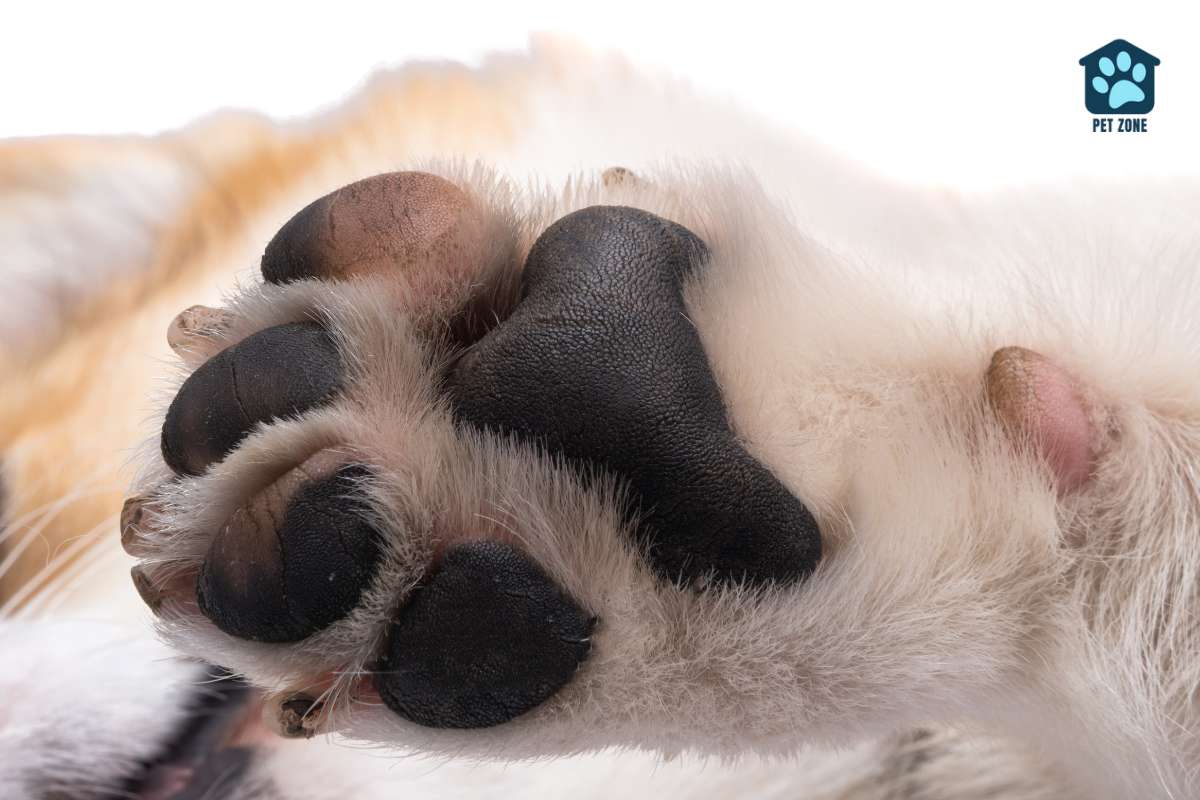
Conclusion
There are several reasons why your dog’s paws may be pink and black. It could be their natural color or a result of genetics. Pink paw pads can also indicate growth, allergies, infections, or exposure to hot surfaces. Taking care of your dog’s paws by regular inspection and providing proper protection can help keep them healthy and happy.
Frequently Asked Questions
Your dog’s paws could be pink and black due to their breed, age or changes in their lifestyle. Some breeds naturally have both colors.
A possible reason your dog’s paws can turn from pink to black is that as they grow older, their paw pads may start producing pigment which results in the color change.
If you notice your dog’s paws turning dark, it could be because of inflammation or infection too. It’s good to inspect the paws often for any signs like this.
No, puppies often have pink paw pads when they are young because their skin is very sensitive and hasn’t been exposed to much yet.
Yes! If your dogs’ paws don’t look right or if touching them causes pain, it means something may be wrong and you should keep them safe by seeking help from a vet.
While some changes are normal with age and behavior; dry conditions, vast temperature swings, and harsh surfaces can lead to discolored, sensitive, possibly painful dog feet . Keeping your four legged friend’s comfort zone in check will lessen unwanted surprises later on!
As an Amazon Associate I earn from qualifying purchases.
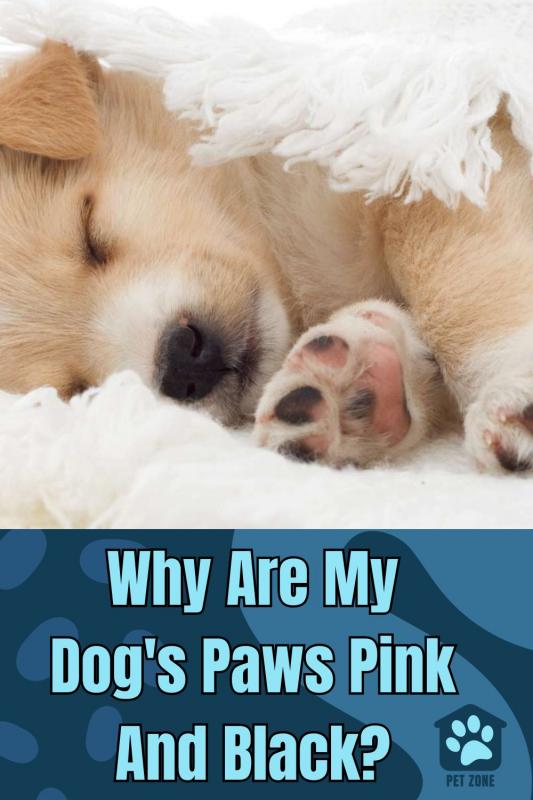


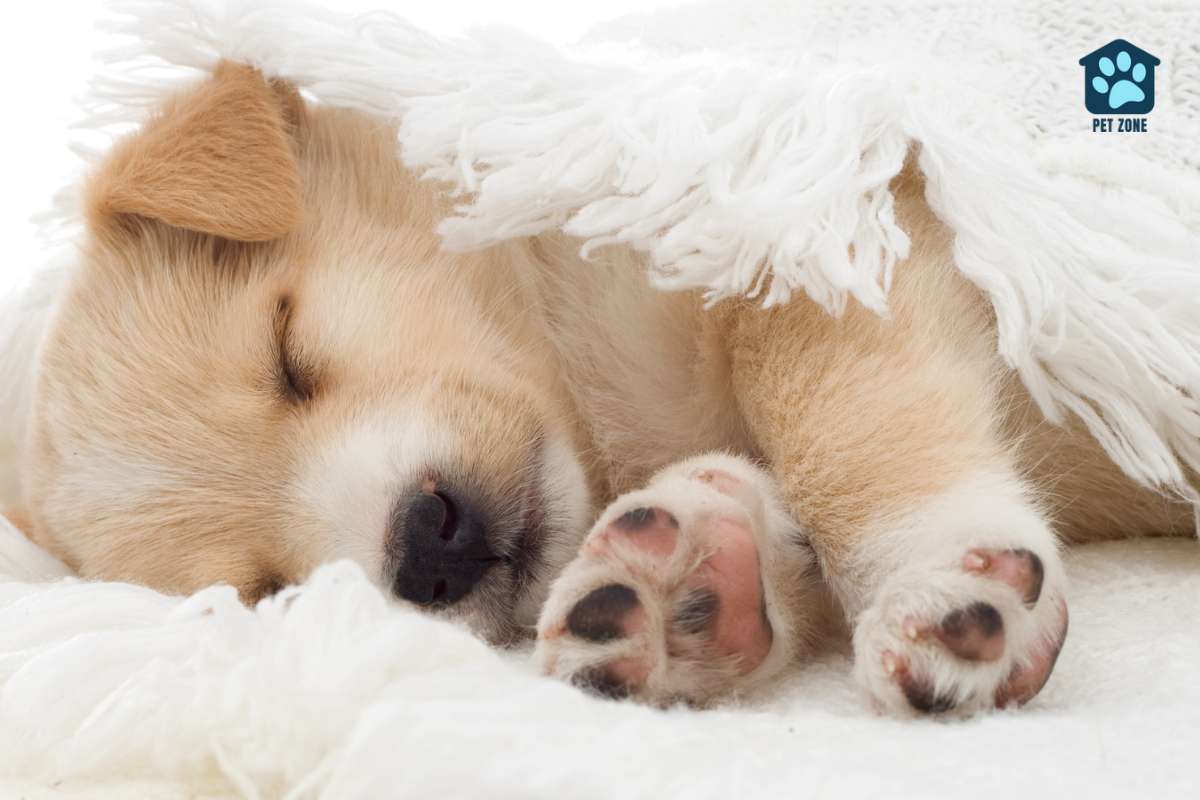


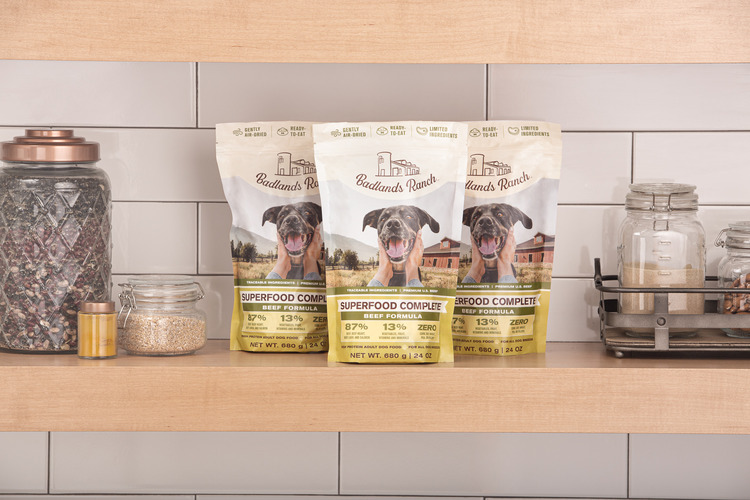
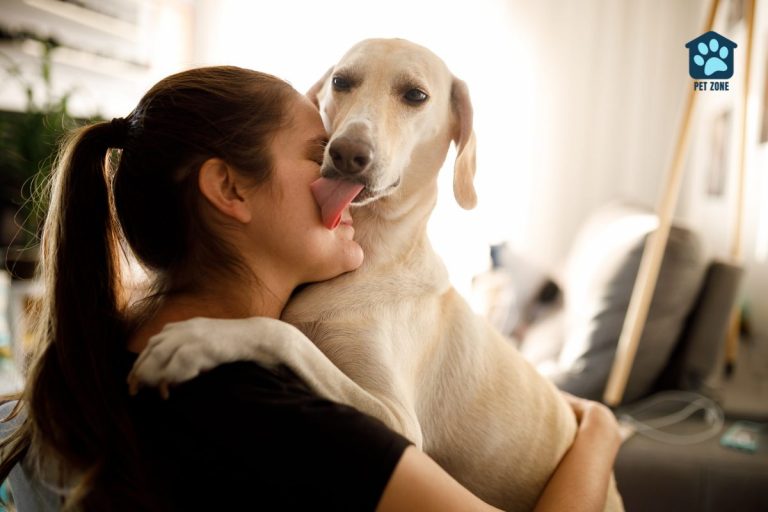
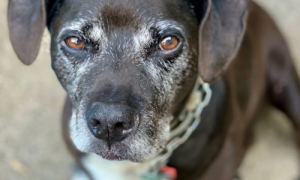
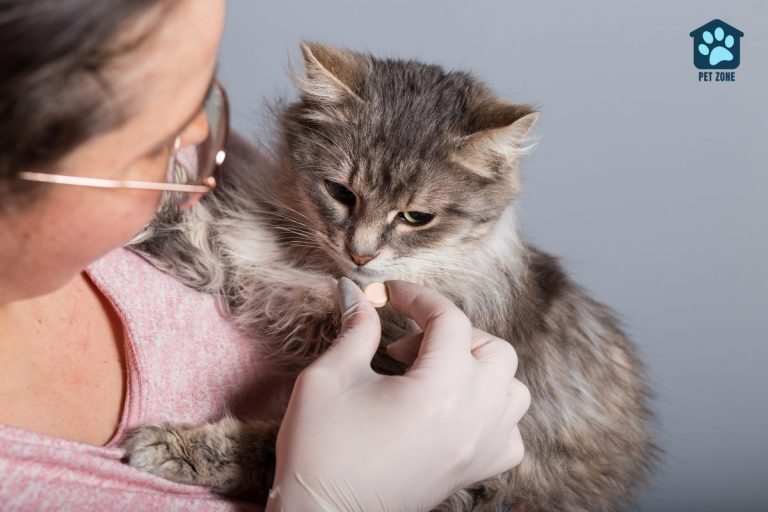
This is such an interesting read on dogs’ paws. I appreciate this information I get from this website. You explain everything so well and help us to understand when something may be wrong with our pets – and when not to worry!